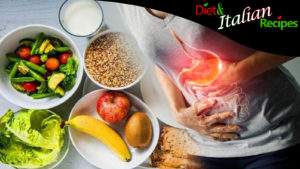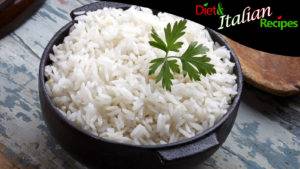The majority of people with diabetes also suffer from high blood pressure, which increases the likelihood of developing heart disease and stroke two to four times compared to other adults. Controlling blood sugar and blood pressure is essential in managing and preventing these conditions. Fortunately, nutrition can play a crucial role in a comprehensive strategy for managing both conditions, as a healthy diet helps control blood pressure and reduces the risk of developing diabetes. A healthy diet is one that meets the body’s needs for vitamins, minerals, and other essential nutrients while maintaining the daily caloric intake. Especially for people with prediabetes or diabetes, a healthy diet limits the intake of sugars and fats and increases the consumption of vegetables and whole grains. The American Diabetes Association recommends that most people with diabetes follow the following meal planning guidelines.

Eating a variety of nutrient-rich foods every day
Eating healthy for people with diabetes means choosing nutrient-rich foods at each meal, such as fruits, vegetables, whole grains, legumes, and fish. These foods provide vitamins and minerals that help prevent some chronic diseases and promote health. Eating a variety of foods is important because different foods provide different nutrients. For example, broccoli is a good source of vitamin C, and Lima beans are rich in iron. If diabetes is well controlled, there is no need to worry about consuming too much sugar in the diet. However, if you have diabetes and do not eat properly, such as not consuming enough fiber, consuming too much fat, or not drinking enough water, you risk consuming too much sugar in your diet. A diet high in sugar can cause complications such as blindness, amputations, and, in extreme cases, death.
Maintaining a healthy weight
Eating properly is an essential part of diabetes management, but no diet can counteract the harmful effects of overweight. In fact, the link between diet, diabetes, and weight is so strong that many doctors consider these three conditions as part of a single disease called “diabesity”. The good news is that a healthy diet and exercise can help maintain a healthy weight. Maintaining a healthy weight is important for managing diabetes and preventing cardiovascular diseases. When weight falls within a healthy range, the amount of abdominal fat is lower. Excess abdominal fat can increase insulin resistance and blood sugar levels, making diabetes control more difficult. If you are overweight, losing even a few pounds can significantly reduce the need for diabetes medications, especially insulin.
Limiting saturated fats, trans fats, and cholesterol
Eating healthy does not mean completely eliminating fats. Instead, it is important to limit saturated fats, trans fats, and cholesterol. Saturated fats are found in foods such as red meat, butter, lard, and high-fat dairy products like cheese and ice cream. Trans fats are found in many processed foods. It is important to check the nutrition labels on food packaging and avoid products where trans fats are listed among the ingredients. The American Diabetes Association recommends keeping daily intake of saturated fats below 7% of total daily calories and reducing trans fats as much as possible. High cholesterol levels are linked to an increased risk of coronary artery disease. The American Diabetes Association recommends keeping daily cholesterol intake below 300 milligrams per day. This is particularly important if you are taking medications to control diabetes.
Eating more vegetables, fruits, and whole grains
Vegetables, fruits, and whole grains are all good sources of fiber, vitamins, and minerals. They are low in calories but rich in nutrients. Eating more vegetables, fruits, and whole grains can help reduce blood sugar and blood pressure. Even a modest increase in the amount of these foods can improve health. If you need to lose weight, try replacing higher-calorie foods with vegetables, fruits, and whole grains. You can incorporate more fruits and vegetables into your daily diet in many ways. You can add them to your regular meals or snacks. You can also try new recipes that use vegetables as the main ingredient, such as vegetable soups or stir-fries. Whole grains are an excellent source of fiber and B vitamins. Whole grains are found in many foods, including bread, pasta, and breakfast cereals.
Pay attention to carbohydrates
Carbohydrates are one of the three nutrients that most affect blood sugar levels. The other two nutrients are fats and proteins. Carbohydrates, found in foods such as grains, fruits, vegetables, and dairy products, can increase blood sugar. However, a high-fiber, low-sugar diet can help manage diabetes by slowing down the rate at which the body breaks down these foods. There are two types of fiber: soluble and insoluble. Both types of fiber can help manage diabetes. Soluble fiber dissolves in water and forms a thick gel that slows digestion. This helps reduce cholesterol, glucose, and insulin levels in the blood.
Avoid hidden sugars and excess protein
Many foods contain “hidden” sugars that can contribute to increased blood sugar levels. These foods include milk, yogurt, cereals, and many processed snacks. The amount of added sugars in a product is indicated in grams on the nutrition label. Look for products that have 5 grams or less of sugar per serving. Excess protein can also increase blood sugar levels. This can happen if you eat too many high-protein foods such as meat, poultry, fish, eggs, dairy products, and beans. If you have diabetes, you may need to limit the amount of protein in your diet. To do this, you can consume smaller portions of high-protein foods or choose low-protein substitutes.
Conclusion
A healthy diet is one that meets the body’s need for vitamins, minerals, and other essential nutrients while maintaining the daily calorie requirement. Especially for people with pre-diabetes or diabetes, a healthy diet limits the intake of sugars and fats and increases the consumption of vegetables and whole grains. The best diet for diabetics includes a variety of nutrient-rich foods such as fruits, vegetables, whole grains, and legumes. Additionally, it contains less sugar, less fat, and less protein compared to other diets.
SHARE the best diet for diabetics: how to prevent diabetes.
The information provided in the Diet and Italian Recipes articles is for INFORMATION ONLY and does not intend to replace the opinion of professional figures such as a doctor, nutritionist, or dietitian, whose intervention is necessary for the prescription and composition of personalized dietary therapies.











